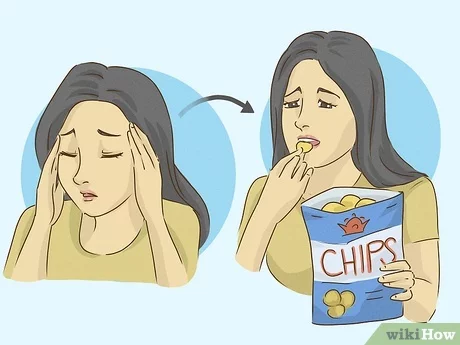![The Ultimate Mini Cut Guide [Rapid Fat Loss]](https://fitnzoid.com/wp-content/uploads/2023/07/6113a9e3ad63f30019501c92.webp)
The Ultimate Mini Cut Guide [Rapid Fat Loss]
![The Ultimate Mini Cut Guide [Rapid Fat Loss]](http://fitnzoid.com/wp-content/uploads/2023/07/pexels-towfiqu-barbhuiya-14513405-scaled.jpg)
Introduction
Losing weight and achieving a lean physique is a common goal for many individuals. While there are various approaches to weight loss, the concept of a mini cut has gained popularity due to its effectiveness in promoting rapid fat loss. In this comprehensive guide, we will explore the ins and outs of a mini cut, including what it is, how it works, and the steps to successfully implement it into your fitness journey. The Ultimate Mini Cut Guide
What is a Mini Cut?
A mini cut is a strategic approach to fat loss that involves creating a calorie deficit for a short duration, typically ranging from 4 to 6 weeks. Unlike traditional long-term dieting, a mini cut aims to achieve rapid fat loss without sacrificing significant muscle mass. It focuses on reducing body fat levels quickly while minimizing the risk of muscle catabolism.
The Benefits of a Mini Cut
There are several benefits associated with a mini cut:
- Rapid Fat Loss: By implementing a mini cut, individuals can experience noticeable fat loss within a relatively short period. The Ultimate Mini Cut Guide [Rapid Fat Loss]
- Preservation of Muscle Mass: With proper planning and execution, a mini cut allows individuals to preserve their hard-earned muscle mass while shedding excess body fat.
- Metabolic Boost: A mini cut can help rev up the metabolism, leading to improved overall fat-burning capabilities. The Ultimate Mini Cut Guide
Preparing for a Mini Cut
Before embarking on a mini cut, it is crucial to prepare both mentally and physically. Here are some steps to take:
- Consult a Professional: Seek guidance from a qualified fitness professional or nutritionist to ensure the mini cut is suitable for your specific circumstances.
- Assess Body Composition: Take measurements and assess your current body composition to set realistic goals for your mini cut.
- Educate Yourself: Gather knowledge about macronutrients, calorie counting, and meal planning to optimize your mini cut experience.
Setting Realistic Goals
Setting realistic goals is essential for a successful mini cut. Consider the following factors:
- Body Fat Percentage: Determine your target body fat percentage based on your current levels and desired physique.
- Timeframe: Set a realistic timeframe for your mini cut, taking into account your starting point and the amount of fat you aim to lose. The Ultimate Mini Cut Guide
- Muscle Preservation: Prioritize maintaining muscle mass while losing fat to achieve a lean and toned physique.
Developing a Nutrition Plan
A well-structured nutrition plan is key to the success of your mini cut. Follow these guidelines:
- Caloric Deficit: Create a moderate caloric deficit of around 15-20% below your maintenance level to facilitate fat loss.
- Macronutrient Distribution: Adequately distribute your macronutrients, focusing on high-quality protein, moderate carbohydrates, and healthy fats.
- Meal Timing: Consider implementing intermittent fasting or meal timing strategies that suit your preferences and lifestyle.
Implementing an Exercise Routine
While nutrition plays a vital role in fat loss, incorporating exercise into your mini cut routine is equally important. Follow these recommendations:
- Resistance Training: Maintain a regular weightlifting routine to preserve muscle mass and promote strength.
- Cardiovascular Exercise: Incorporate cardiovascular activities like jogging, cycling, or HIIT workouts to boost calorie expenditure.
- Supplement with NEAT: Increase your non-exercise activity thermogenesis (NEAT) by incorporating more movement throughout your day.
Monitoring Progress
Consistently monitoring your progress allows you to make necessary adjustments and stay on track. Consider these strategies:
- Regular Weigh-Ins: Weigh yourself consistently, preferably under the same conditions, to track changes in body weight.
- Body Measurements: Take measurements of key areas such as waist, hips, and thighs to monitor changes in body composition. The Ultimate Mini Cut Guide
- Progress Photos: Capture progress photos to visually assess changes in body shape and muscle definition.
Overcoming Challenges
During a mini cut, you may face challenges that can hinder your progress. Here’s how to overcome them:
- Hunger and Cravings: Manage hunger and cravings by incorporating high-fiber foods, drinking plenty of water, and utilizing appetite suppressants if necessary.
- Plateaus: If progress stalls, adjust your caloric intake or increase exercise intensity to overcome plateaus and continue progressing.
- Social Situations: Plan ahead for social events by making mindful food choices and staying committed to your goals.
Staying Motivated
Staying motivated throughout your mini cut is crucial for long-term success. Consider these motivational strategies:
- Track Your Progress: Celebrate milestones and track your progress using a fitness journal or mobile app.
- Find Support: Surround yourself with like-minded individuals who share similar goals to keep motivation high.
- Reward System: Establish a reward system for reaching specific milestones to maintain motivation and reinforce positive habits.
Transitioning out of a Mini Cut
After completing a mini cut, transitioning out of the calorie deficit phase is essential. Follow these guidelines:
- Reverse Dieting: Gradually increase your caloric intake to avoid rapid weight regain and allow your metabolism to readjust.
- Strength Focus: Shift your training focus toward strength and muscle gain to take advantage of the increased insulin sensitivity.
Potential Risks and Considerations
While a mini cut can be an effective fat loss strategy, it is essential to consider potential risks and limitations. Some factors to keep in mind include:
- Individual Variability: The effectiveness of a mini cut may vary based on individual factors such as metabolism, muscle mass, and adherence to the plan.
- Muscle Catabolism: Without proper planning, a mini cut can lead to muscle loss, emphasizing the importance of adequate protein intake and resistance training.
![The Ultimate Mini Cut Guide [Rapid Fat Loss]](http://fitnzoid.com/wp-content/uploads/2023/07/pexels-dmitriy-ganin-7772681-scaled.jpg)
Conclusion
In conclusion, a mini cut is a powerful tool for rapid fat loss while preserving muscle mass. By following the outlined steps, you can implement a successful mini cut into your fitness journey and achieve your desired physique. Remember to consult with a professional, set realistic goals, develop a nutrition plan, and stay motivated throughout the process. The Ultimate Mini Cut Guide [Rapid Fat Loss]
FAQs
- Is a mini cut suitable for everyone?
- A mini cut is generally suitable for individuals who have a good foundation of muscle mass and are looking to reduce body fat.
- How long should a mini cut last?
- A mini cut typically lasts between 4 to 6 weeks, but the duration may vary based on individual goals and progress.
- Can I build muscle during a mini cut?
- Building muscle during a mini cut is challenging due to the caloric deficit, but maintaining muscle mass is possible withproper resistance training and adequate protein intake.
- What should I do if I hit a weight loss plateau during a mini cut?
- If you hit a weight loss plateau, consider adjusting your caloric intake or increasing your exercise intensity to stimulate further fat loss.
- Is it necessary to track macros during a mini cut?
- Tracking macros can be beneficial for optimizing results during a mini cut. It helps ensure you are consuming the right balance of nutrients for fat loss and muscle preservation. The Ultimate Mini Cut Guide
- Can I do a mini cut multiple times in a year?
- Yes, you can incorporate mini cuts multiple times a year, but it’s important to allow your body time to recover between each mini cut to avoid metabolic adaptations and muscle loss.
Rectangle Shape Body: Dressing Tips for Enhancing Your Figure




Your guide to mini-cuts Rapid Fat Loss - FITNZOID
[…] fitnzoid.com 9 July 2023 Your guide to mini-cuts […]